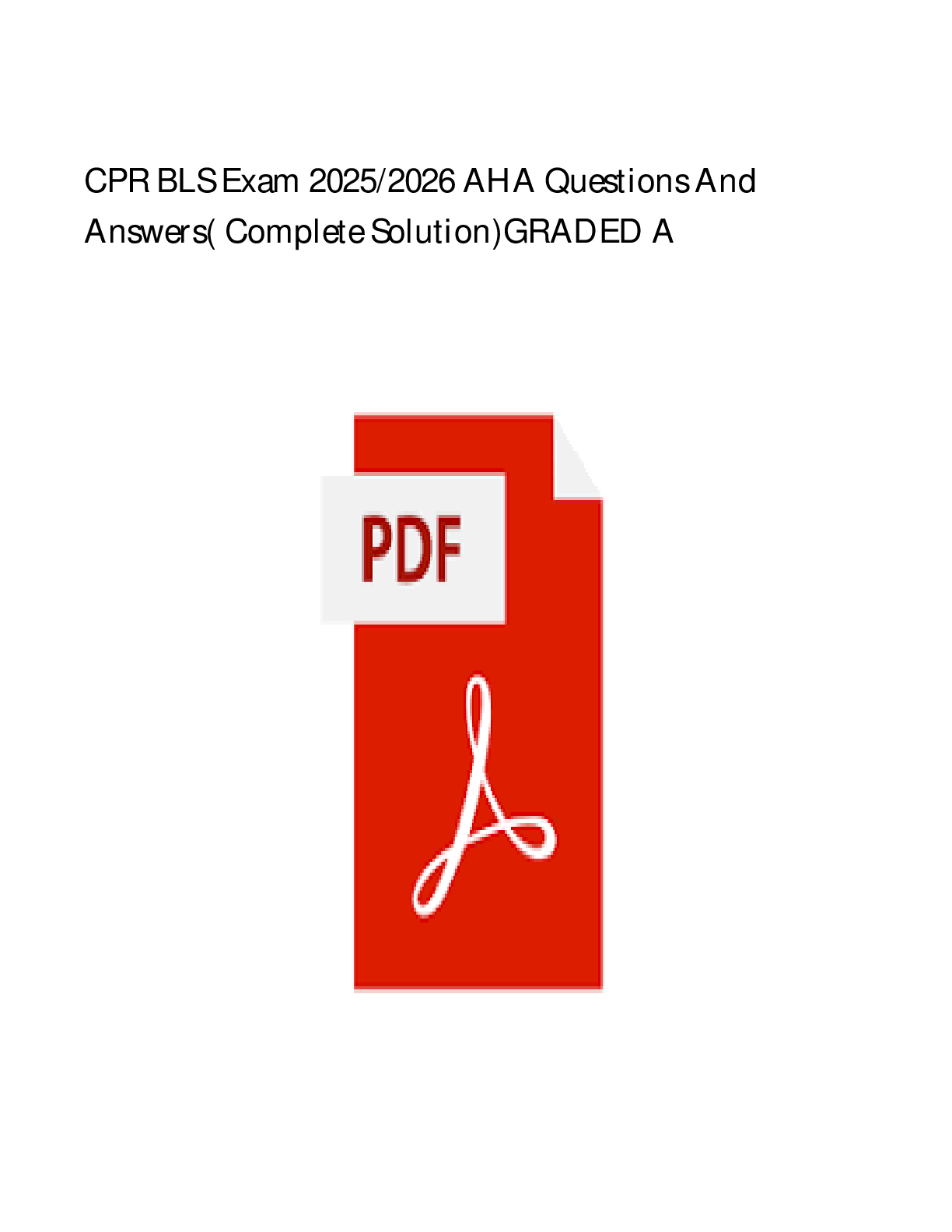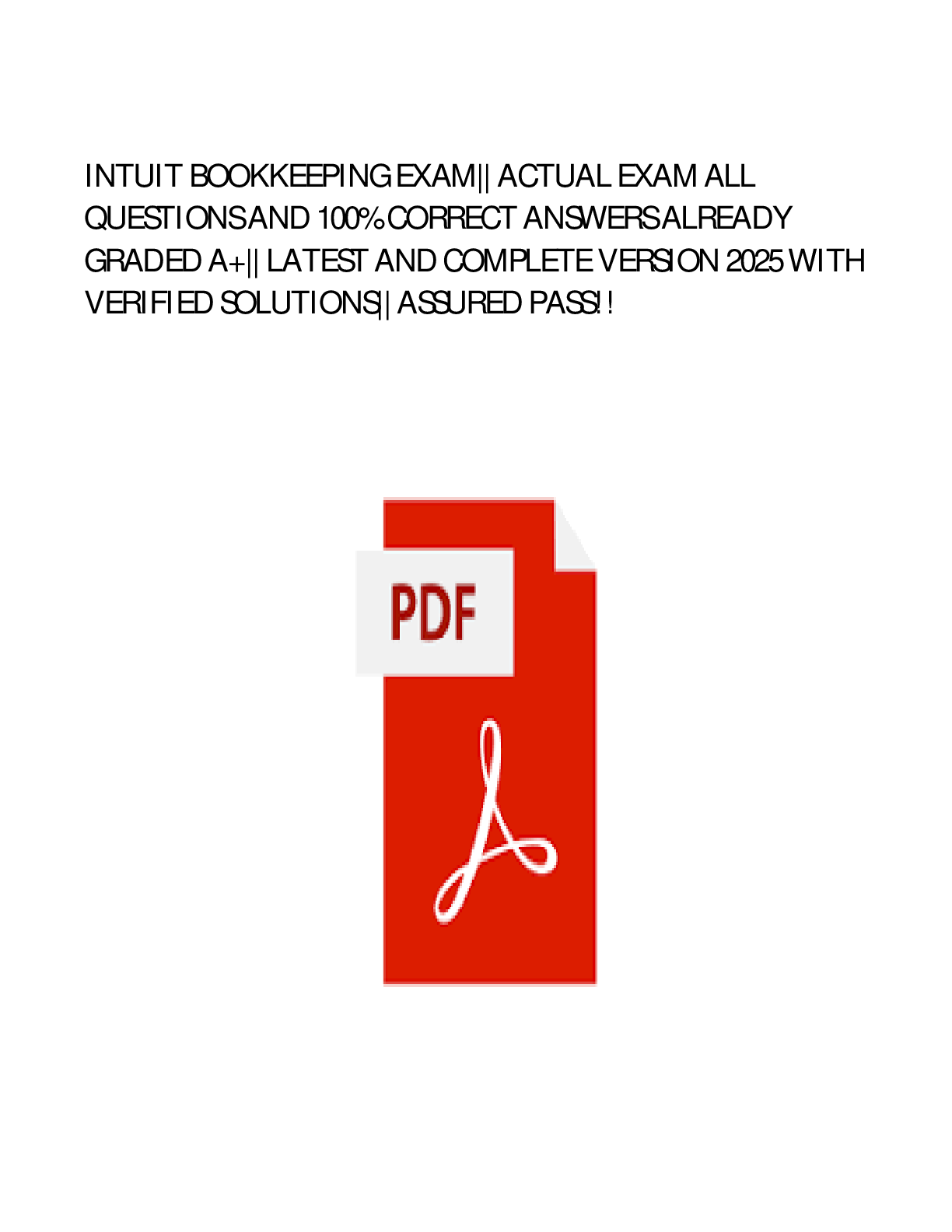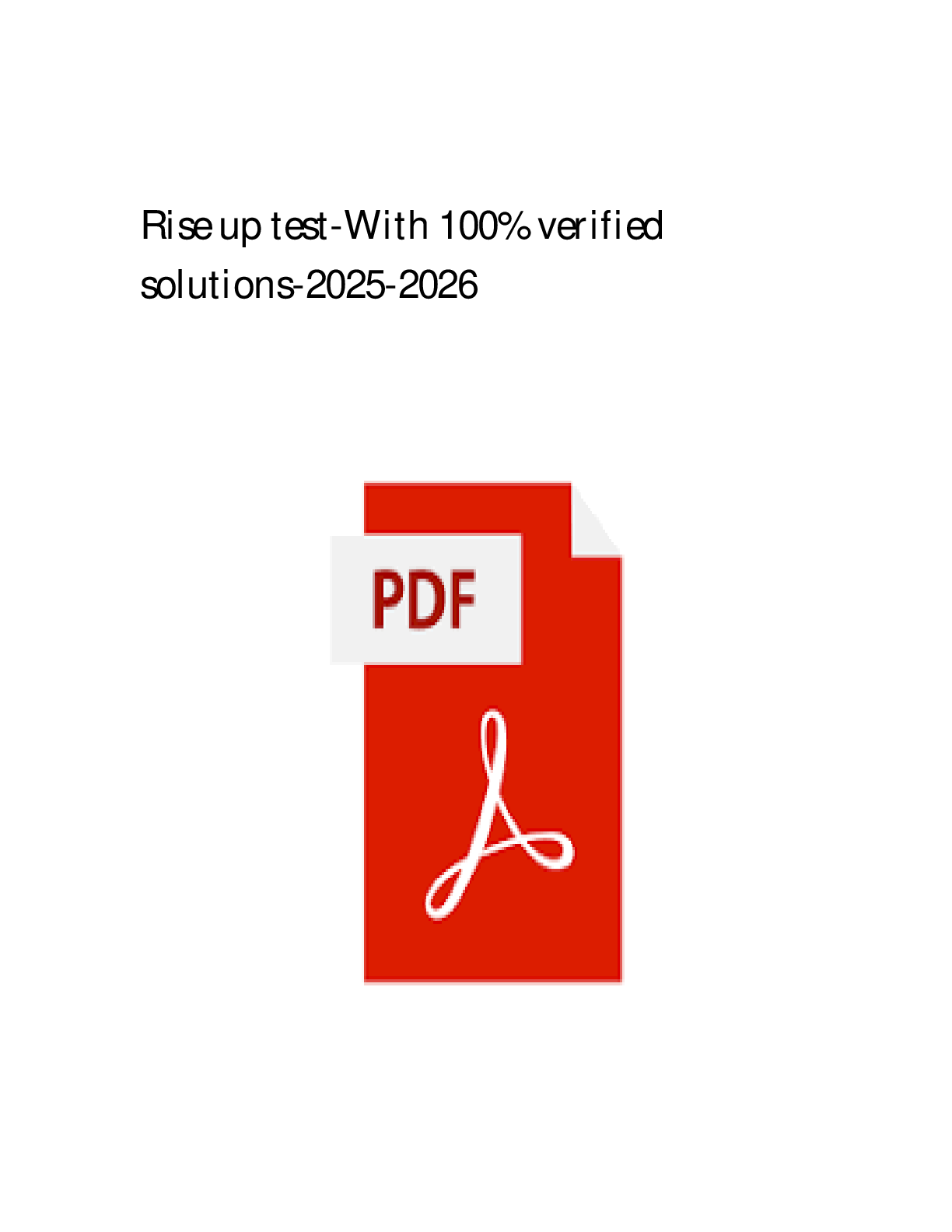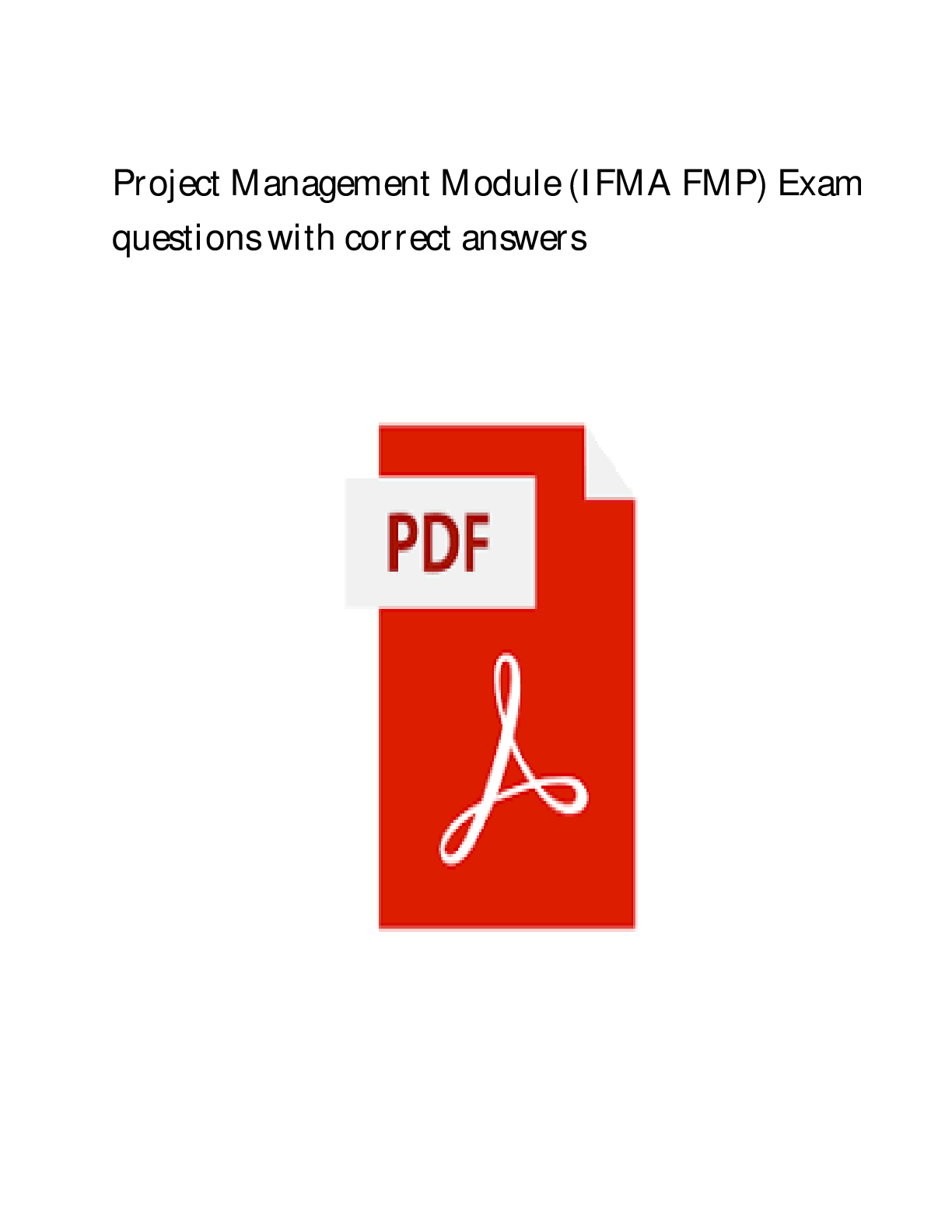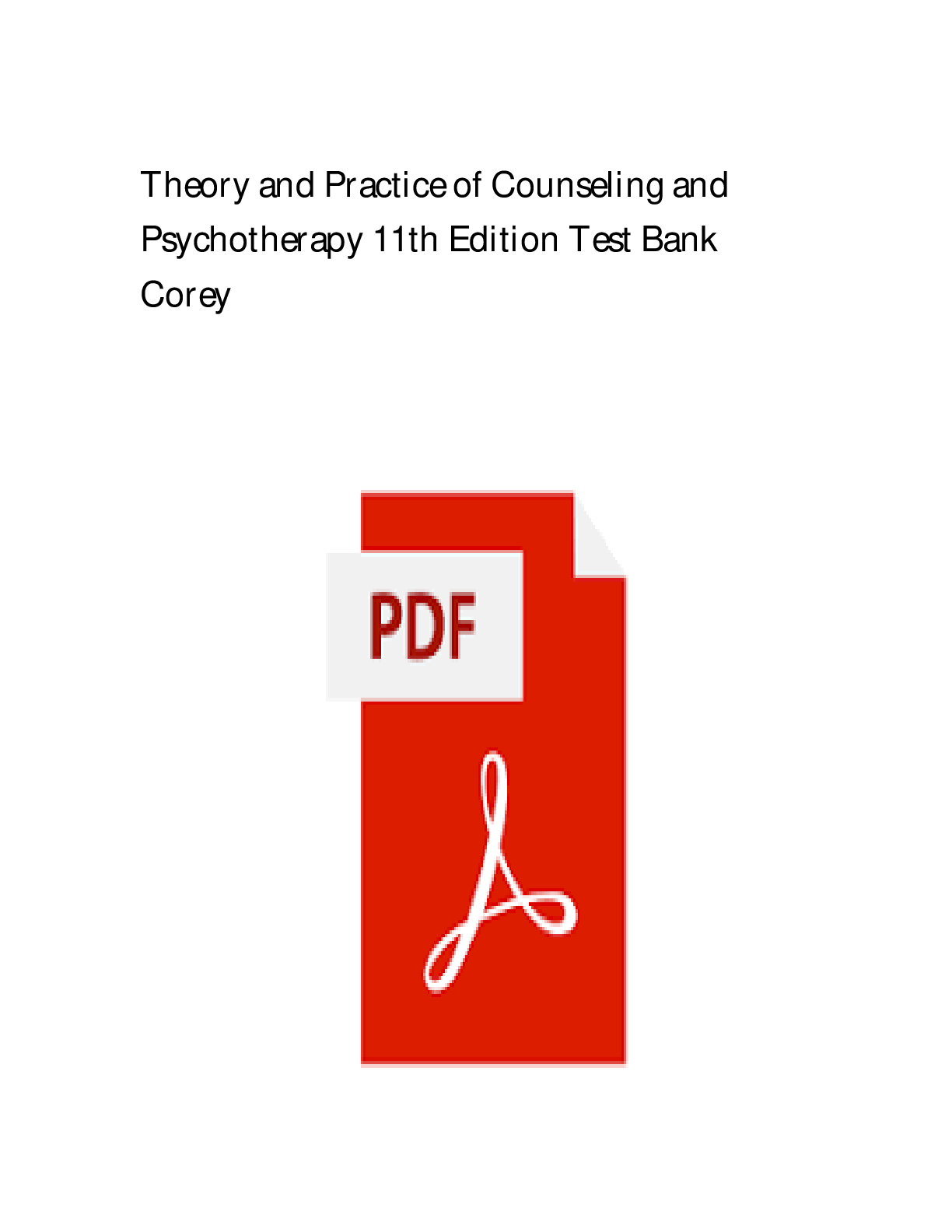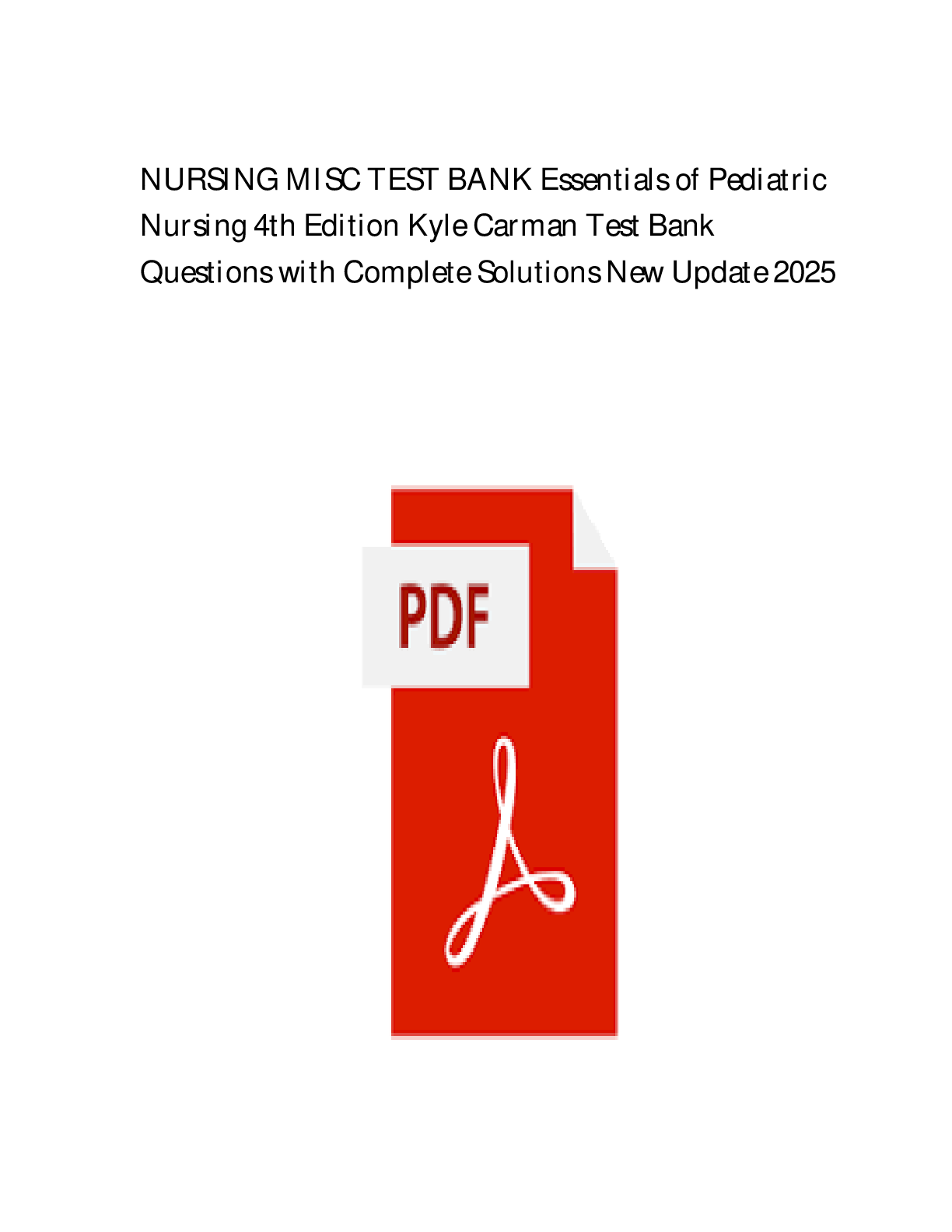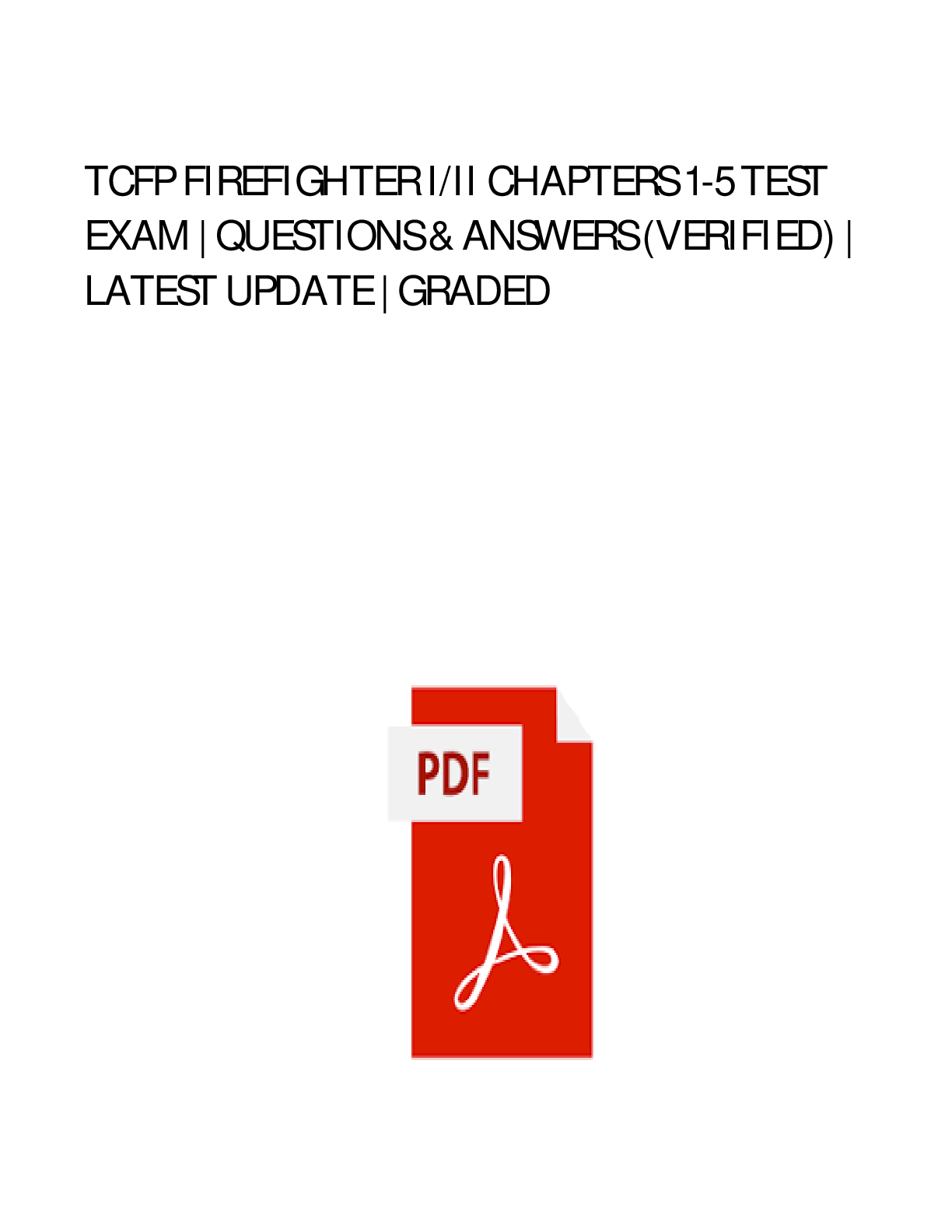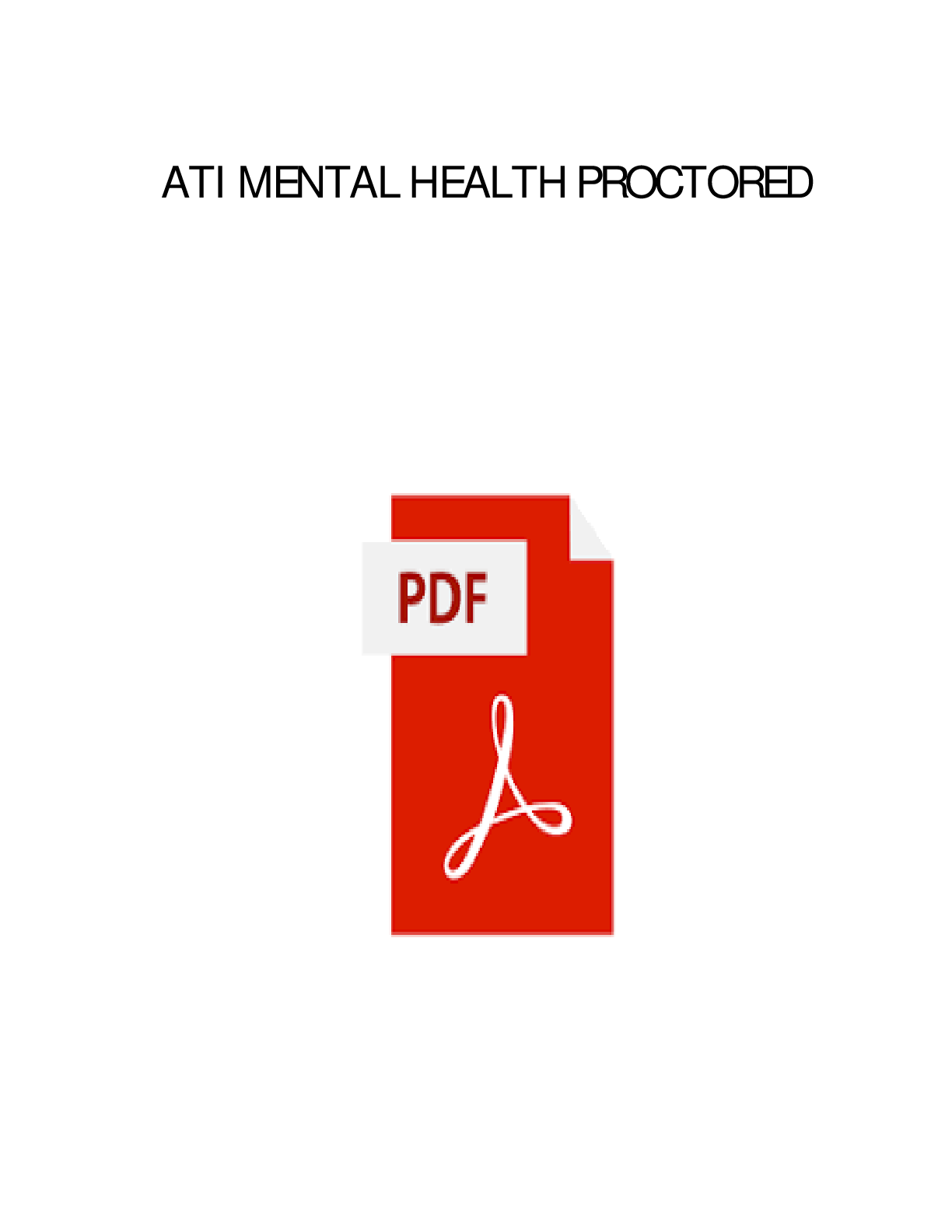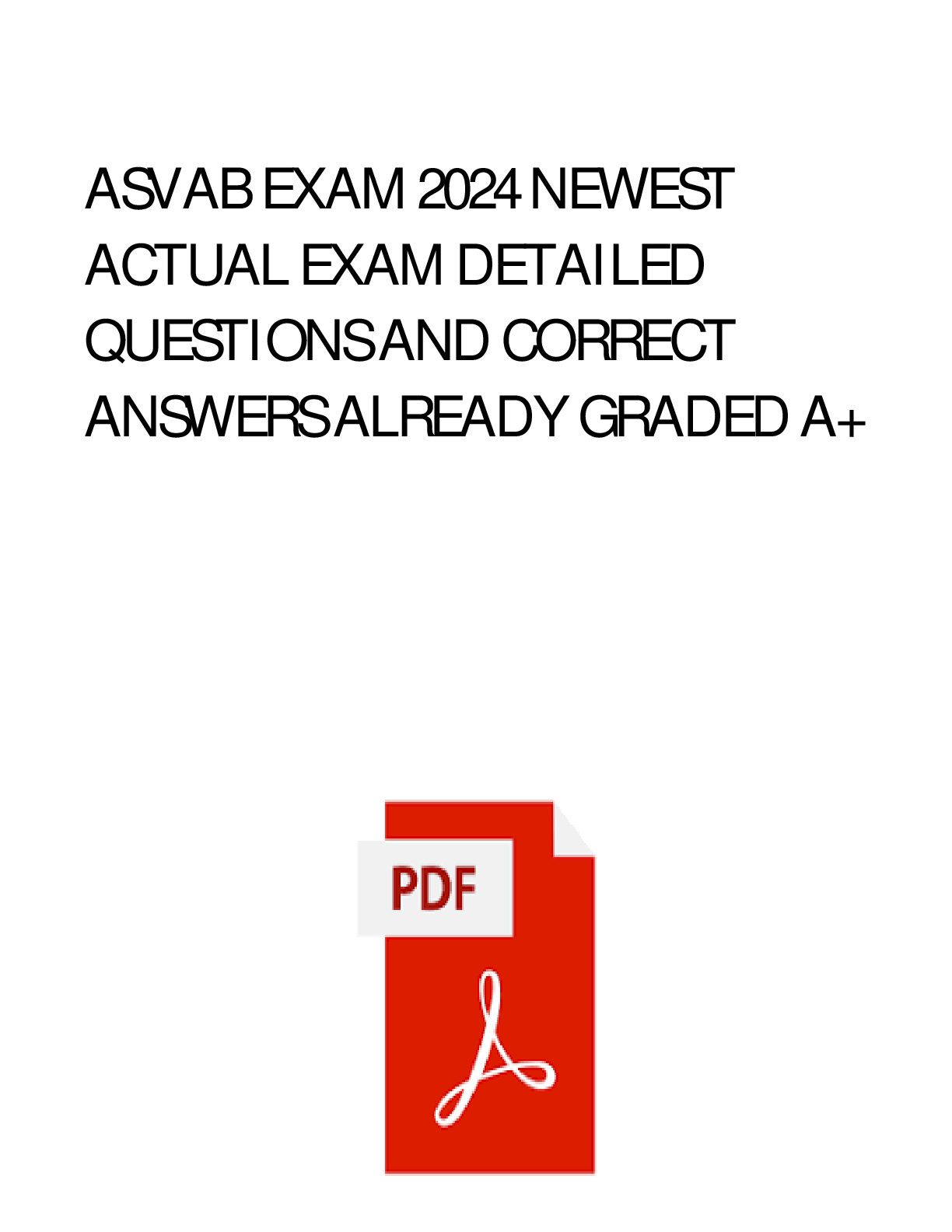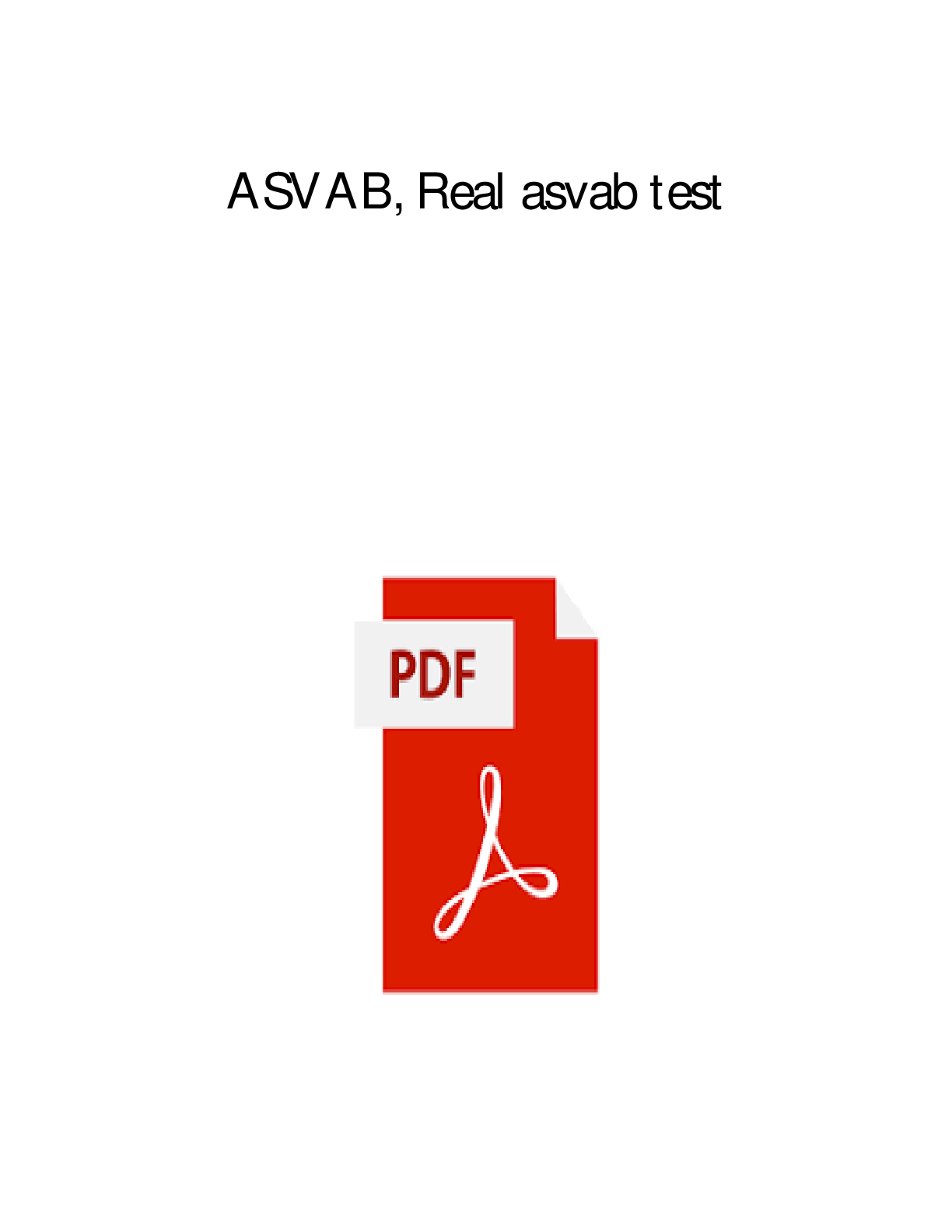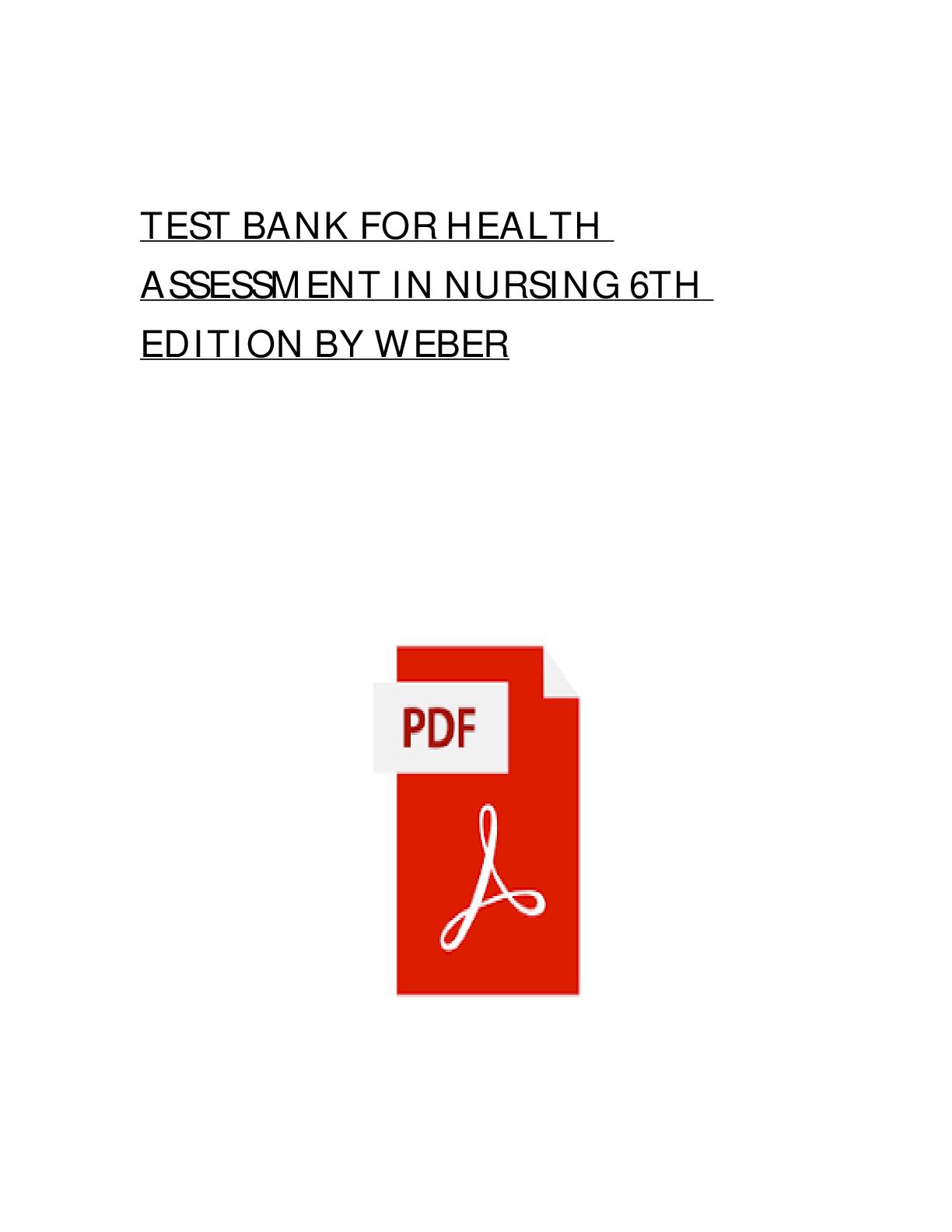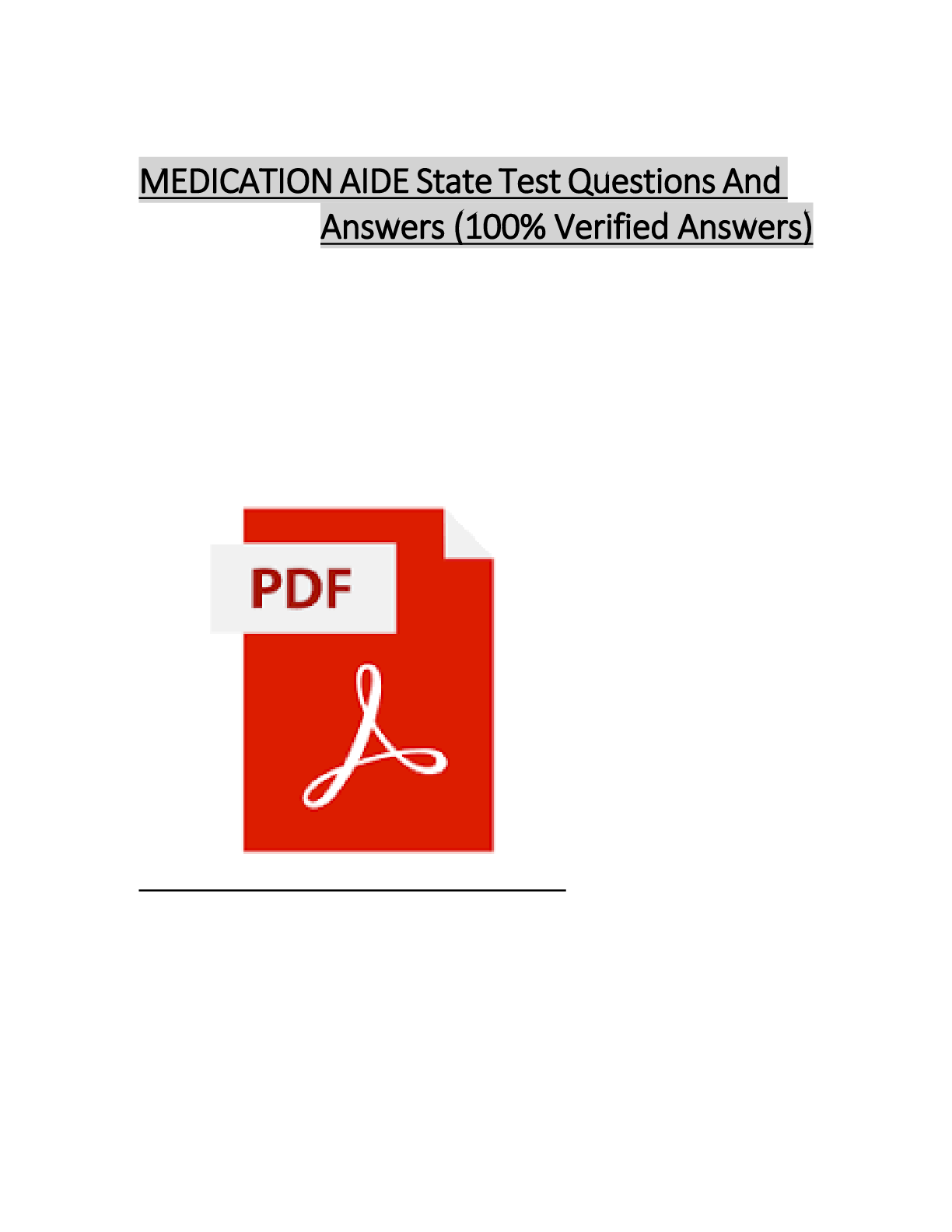MED SURG > EXAM > Med Surg Test bank ( Red HESI Test bank Med-Surg and other resources) 302 Questions and Answers 2024 (All)
Med Surg Test bank ( Red HESI Test bank Med-Surg and other resources) 302 Questions and Answers 2024
Document Content and Description Below
Med Surg Test bank ( Red HESI Test bank Med-Surg and other resources)/302 Questions and Answers The nurse assesses a patient with shortness of breath for evidence of longstanding hypoxemia by inspecti... ng: A. Chest excursion B. Spinal curvatures C. The respiratory pattern D. The fingernail and its base - Correct Answer -D. The fingernail and its base Clubbing, a sign of long-standing hypoxemia, is evidenced by an increase in the angle between the base of the nail and the fingernail to 180 degrees or more, usually accompanied by an increase in the depth, bulk, and sponginess of the end of the finger. 2. The nurse is caring for a patient with COPD and pneumonia who has an order for arterial blood gases to be drawn. Which of the following is the minimum length of time the nurse should plan to hold pressure on the puncture site? A. 2 minutes B. 5 minutes C. 10 minutes D. 15 minutes - Correct Answer -B. 5 minutes Following obtaining an arterial blood gas, the nurse should hold pressure on the puncture site for 5 minutes by the clock to be sure that bleeding has stopped. An artery is an elastic vessel under higher pressure than veins, and significant blood loss or hematoma formation could occur if the time is insufficient. 3. The nurse notices clear nasal drainage in a patient newly admitted with facial trauma, including a nasal fracture. The nurse should: A. test the drainage for the presence of glucose. B. suction the nose to maintain airway clearance. C. document the findings and continue monitoring. D. apply a drip pad and reassure the patient this is normal. - Correct Answer -A. test the drainage for the presence of glucose. Clear nasal drainage suggests leakage of cerebrospinal fluid (CSF). The drainage should be tested for the presence of glucose, which would indicate the presence of CSF. 4. When caring for a patient who is 3 hours postoperative laryngectomy, the nurse's highest priority assessment would be: A. Airway patency B. Patient comfort C. Incisional drainage D. Blood pressure and heart rate - Correct Answer -A. Airway patency Remember ABCs with prioritization. Airway patency is always the highest priority and is essential for a patient undergoing surgery surrounding the upper respiratory system. 5. When initially teaching a patient the supraglottic swallow following a radical neck dissection, with which of the following foods should the nurse begin? A. Cola B. Applesauce C. French fries D. White grape juice - Correct Answer -A. ColaWhen learning the supraglottic swallow, it may be helpful to start with carbonated beverages because the effervescence provides clues about the liquid's position. Thin, watery fluids should be avoided because they are difficult to swallow and increase the risk of aspiration. Nonpourable pureed foods, such as applesauce, would decrease the risk of aspiration, but carbonated beverages are the better choice to start with. 6. The nurse is caring for a patient admitted to the hospital with pneumonia. Upon assessment, the nurse notes a temperature of 101.4° F, a productive cough with yellow sputum and a respiratory rate of 20. Which of the following nursing diagnosis is most appropriate based upon this assessment? A. Hyperthermia related to infectious illness B. Ineffective thermoregulation related to chilling C. Ineffective breathing pattern related to pneumonia D. Ineffective airway clearance related to thick secretions - Correct Answer -A. Hyperthermia related to infectious illness Because the patient has spiked a temperature and has a diagnosis of pneumonia, the logical nursing diagnosis is hyperthermia related to infectious illness. There is no evidence of a chill, and her breathing pattern is within normal limits at 20 breaths per minute. There is no evidence of ineffective airway clearance from the information given because the patient is expectorating sputum. 7. Which of the following physical assessment findings in a patient with pneumonia best supports the nursing diagnosis of ineffective airway clearance? A. Oxygen saturation of 85% B. Respiratory rate of 28 C. Presence of greenish sputum D. Basilar crackles - Correct Answer -D. Basilar crackles The presence of adventitious breath sounds indicates that there is accumulation of secretions in the lower airways. This would be consistent with a nursing diagnosis of ineffective airway clearance because the patient is retaining secretions. 8. Which of the following clinical manifestations would the nurse expect to find during assessment of a patient admitted with pneumococcal pneumonia? A. Hyperresonance on percussion B. Fine crackles in all lobes on auscultation C. Increased vocal fremitus on palpation D. Vesicular breath sounds in all lobes - Correct Answer -C. Increased vocal fremitus on palpation. A typical physical examination finding for a patient with pneumonia is increased vocal fremitus on palpation. Other signs of pulmonary consolidation include dullness to percussion, bronchial breath sounds, and crackles in the affected area. 9. Which of the following nursing interventions is of the highest priority in helping a patient expectorate thick secretions related to pneumonia? A. Humidify the oxygen as able B. Increase fluid intake to 3L/day if tolerated. C. Administer cough suppressant q4hr. D. Teach patient to splint the affected area. - Correct Answer -B. Increase fluid intake to 3L/day if tolerated. Although several interventions may help the patient expectorate mucus, the highest priority should be on increasing fluid intake, which will liquefy the secretions so that the patient can expectorate them more easily. Humidifying the oxygen is also helpful, but is not the primary intervention. Teaching the patient to splint the affected area may also be helpful, but does not liquefy the secretions so that they can be removed. 10. During discharge teaching for a 65-year-old patient with emphysema and pneumonia, which of the following vaccines should the nurse recommend the patient receive? A. S. aureus B. H. influenzae C. Pneumococcal D. Bacille Calmette-Guérin (BCG) - Correct Answer -C. Pneumococcal The pneumococcal vaccine is important for patients with a history of heart or lung disease, recovering from a severe illness, age 65 or over, or living in a long-term care facility. 11. The nurse evaluates that discharge teaching for a patient hospitalized with pneumonia has been most effective when the patient states which of the following measures to prevent a relapse? A. [Show More]
Last updated: 9 months ago
Preview 5 out of 96 pages

Loading document previews ...
Buy this document to get the full access instantly
Instant Download Access after purchase
Buy NowInstant download
We Accept:

Reviews( 0 )
$25.50
Can't find what you want? Try our AI powered Search
Document information
Connected school, study & course
About the document
Uploaded On
Oct 20, 2024
Number of pages
96
Written in
Additional information
This document has been written for:
Uploaded
Oct 20, 2024
Downloads
0
Views
14

